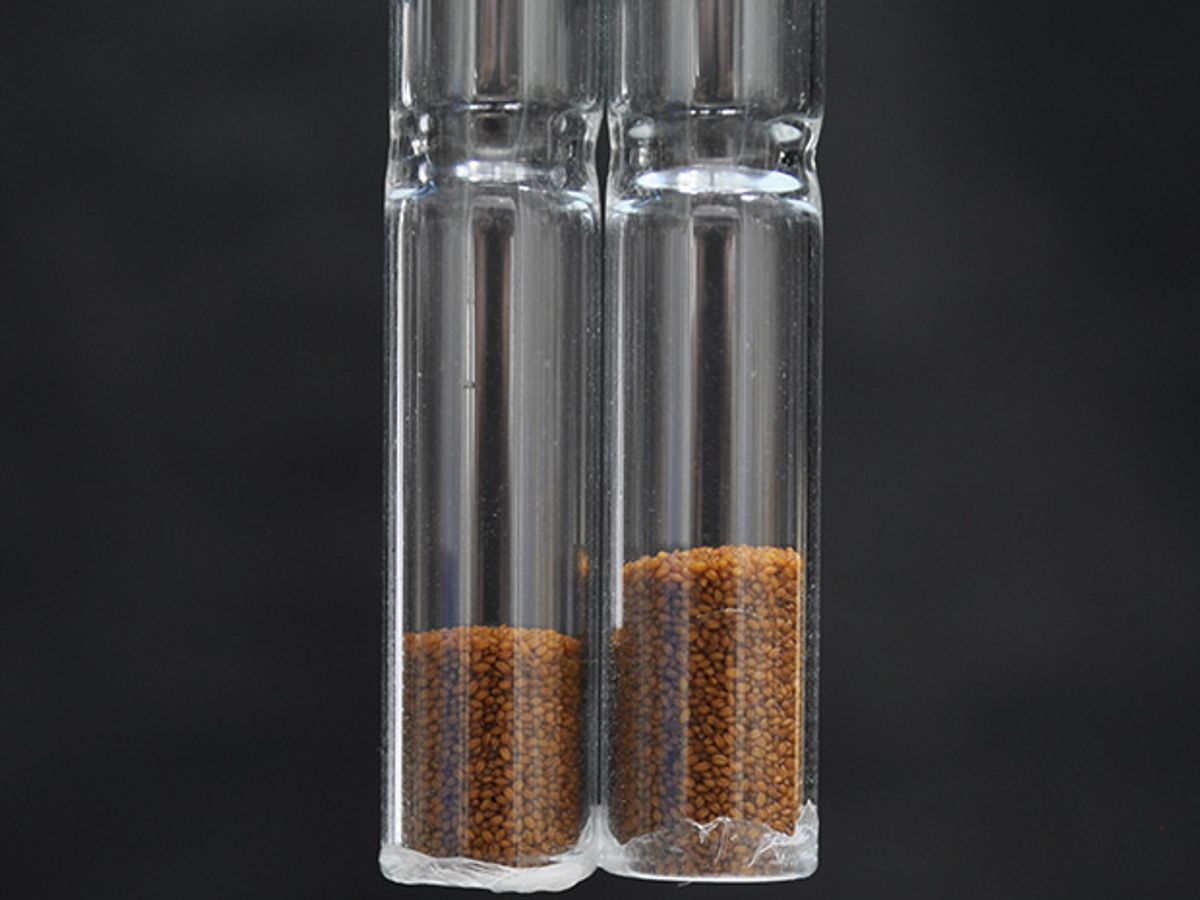According to a United Nations forecast, demand for food and animal feed will nearly double over the next 25 years as the world adds another two billion people. Scientists at Kyushu University in southwest Japan think what will help save us is the fourth state of matter—plasma.
Researchers around the world are investigating how blasting seeds with ionized gas can help boost plant growth. Now the Kyushu research team has developed a much simpler plasma technology that it claims can both significantly increase crop yields and shorten harvest time. Kazunori Koga, a plasma engineer and associate professor in Kyushu University, described the technique at the American Vacuum Society’s 62nd International Symposium & Exhibition in San Jose, Calif. last month.
Unlike more expensive and complicated equipment used by many other researchers, the device employed by Koga and colleagues is a custom-built plasma device that requires no container, vacuum pump, or added gas—merely the surrounding air. The device belongs to a class called atmospheric-pressure dielectric barrier discharge devices (DBD), a type of plasma generator where charged electrodes are coated in a dielectric. “We assembled the device from parts costing about thirty-thousand yen ($320)” Koga says. “Its design is scalable, so we can change it according to our needs.”

The DBD generates a 9.2-kilovolt, 0.2 amp cold plasma containing a potent mix of reactive oxygen and nitrogen molecules, photons, ions, and electrons. “The plasma produced a wide density range of reactive chemical species and particles that interact with the subject, yet without doing it any thermal damage, even though their energy levels are high,” Koga explains.
The seeds Koga described at AVS were of a plant typically used in many botany and genetics experiments, Arabidopsis thaliana. These were irradiated for 3 minutes in the particle cloud and then transferred to a bed of matted fiber and grown until harvested. The leaves of the plants and the weight of the seeds were measured during the growth period.
Koga says that compared to non-irradiated seeds, the plants grown from the plasma-exposed seeds delivered a 7-percent shorter harvest time—down from 71 days to 66.5 days on average. In addition, the seeds experienced a 12-percent increase in mass, and the plant’s main leaf size was 30-percent larger.
More recent experiments on a different variety of seed produced even more spectacular results and are set to be published in Applied Physics in December. Compared with non-treated seeds, the irradiated seeds “led to a 11-percent shorter harvest time,” explains Koga, “a 56-percent increase in total seed weight, and a 39-percent increase in the number of seeds harvested from the grown plants.”
In explaining the results, Koga says that the plasma treatment speeds up the cell cycle so that the plant and seeds grow faster overall, with reactive oxygen species playing a key role in the effects.
In these experiments, because the plants’ genome sequences are known, the researchers were able to then screen the seeds for possible genetic mutations caused by the plasma irradiation. But they found none. It’s a finding that might speak well of the technique’s safety.
Nevertheless, Edward Bormashenko, professor of chemical engineering and biotechnology at Ariel University in Israel, says the situation was “more complicated than these results might indicate.” Pointing to his own team’s plasma research using seeds of lentils, beans, and wheat, he says: “There is no general approach available yet that can be applied to different kinds of seeds. Much depends on the types of seeds used, the conditions under which they geminate, and other factors.”
Regarding increased growth, “the mechanisms are complicated,” says Bormashenko. His team showed that in one case cold plasma causes the seed coating to absorb water more quickly.
Complicated or not, the Kyushu researchers are convinced enough of the practicality of their results that they are collaborating with a Japanese company to develop a large-scale seed treatment device. Koga adds that they would also like to work with companies outside Japan to develop applications.




